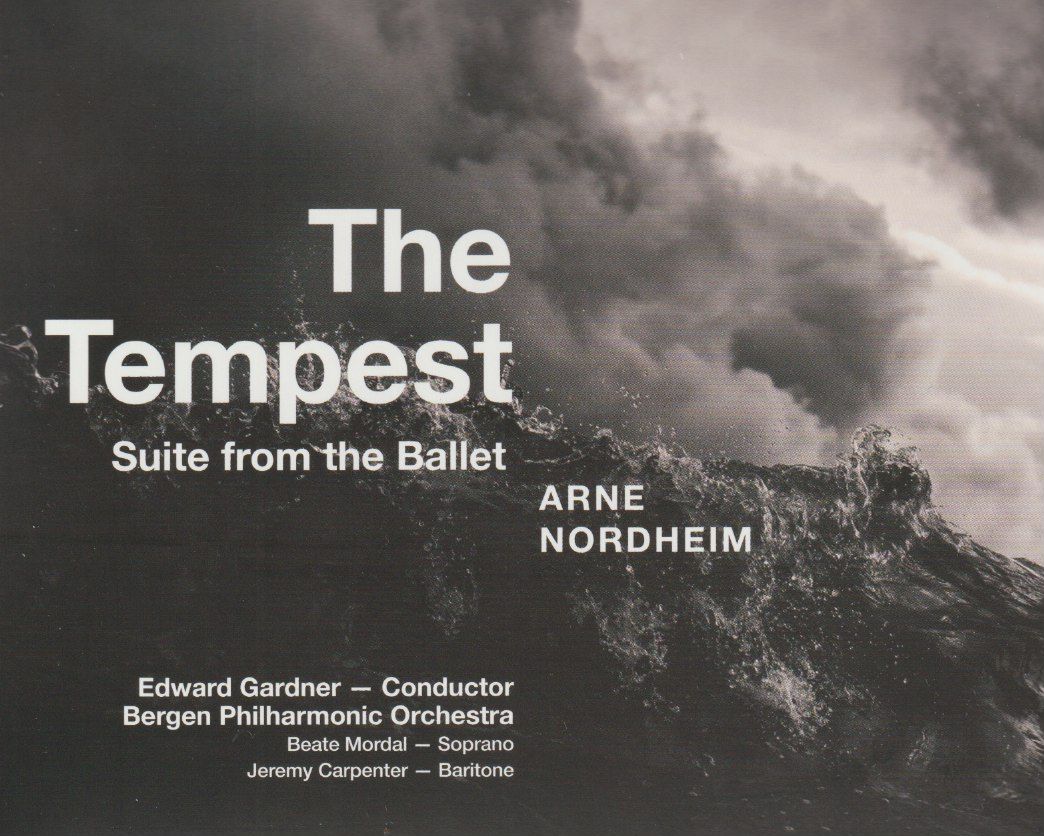Arne Nordheim's hyper-dramatic 'The Tempest' Suite
This is a phenomenal disc - and if it's your introduction to Nordheim, what a way to start!

Conductor Edward Gardner said that Arne Nordheim’s Suite from the ballet The Tempest offers ...
... postcards of moods that demand so much of us individually and collectively as an orchestra
Heres a taster:
The 1979 Suite from the ballet is extraordinary. Arne Nordheim (1931-2010) was a remarkable Norwegian composer who studied with Vagn Holmboe (1909-1996) at the Norwegian Academy of Music. His acquiaintance with electronic music came via Paris and Warasaw (Polish Radio), and with Ligeti in Stockholm: he is known for many things, amongst them his affinity for the integration of electronic music with instrumental/orchestral forces (a process begun with Epitaffio per orchestra e nastro magnetico of 1963):
We hear this expertise with electronic music right at the timbre-driven beginning of Nordhein’s The Tempest, in a recorded invocation of Nature, slow, unhurried, primal, followed by birdsong and wordless soprano (the excellent, amazing Beate Mordal), closely followed by the fine baritone Jeremy Carpenter in imitation. Superbly recorded in the Grieghallen concert hall in Bergen (Norway), the disc plays homage to one of Norway’s most important contemporary composers.
The Tempest was premiered at the Schweyzingen Festival in May 1979. In 2021 the Bergen {hilarmonic under Gardner presented the score during the Bergen International Festival - not only with dance, but also with a video retelling by Sarah Derendinger. Here of course we have the audio-only component but a DVD/Bl;uray of the event would certainly be appreciated ...
Of course, I say “hyper-dramatic” in the title - and much of it is - but there are moments of sublime beauty too (“Caliban’s Warning,” the last movement of the Suite). Indeed, the piece starts from the quiet roar of the sea and rises to a vital, energetic complexity that seems immediately amplified in the “Storm with Lightning and Thunder ...” second movement:
Gardner pinpoints the visceral nature of the music, projecting its elementalism, while also maintaining maximal clairity (something helped along by the excellent recording, of course).
After a brief “Awakening,” the two wordless voiecs return for “Magic Circle,” a place of great contrasts. The lyrical panel that contrasts with the energy of the first part of this movement is remarkable, massively expressive and featuring superbly played solo strings (that recur in the next movement, ”Lacrymae”). Elusive, as thin as a spider’s web, the music invites us, the listeners, into a remarkable interior realm.
A thread that runs through the work is a five-note sequence derived from the word “Amore” (Love). What impresses me is the intrinsically expressive nature of the music, writ large in “Lachrymae” but there too in the more rhythmic, persussion-based “A Mixed Trod” (the sixth movement) with its fabulously evocative use of bells.
Nordheim’s glowing way with harmony is well-known, and certainly heard in the penultimate “Four Legs and Two Voices” (which actually sets words as opposed to a vocalise). How wonderful that Nordal and Carpenter are so excellently matched; and how magical the final “Caliban’s Warning,” where electronics return, magically wafting over and around the voices.
Superb, informative booklet notes by the expert on Nordic music that is Andrew Mellor complete an unmussable release. Andrew Mellor’s book, The Northern Silence is required reading(Amazon link below). This is a phenomenal disc - and if it's your introduction to Nordheim, what a way to start!
Here is a complementary performance, the South West German Radio Symphony Orchestra unde Charles Darden with Susan Campbell (soprano) and Christopher Keyte (baritone) - notable for the lovely visuals as the music progresses.
